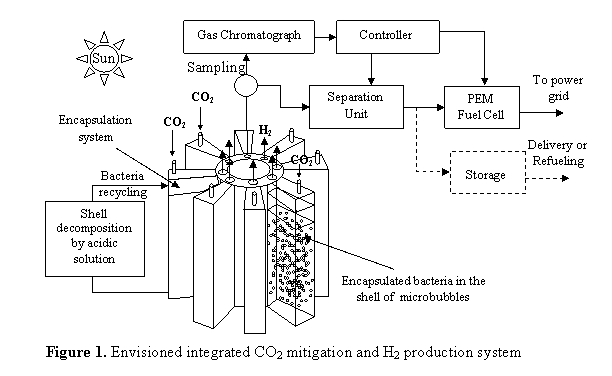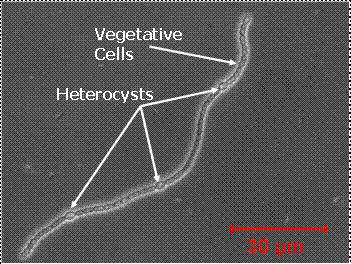
PI: Prof. Laurent Pilon, UCLA, MAE Dept.
Co-PI : Prof. Jenny Jay, UCLA, CEE Dept.
Graduate Student: Halil Berberoglu, MAE Dept.
Project web site: www.seas.ucla.edu/~pilon/Bioreactor.html
Industrial nations in general and the United States in particular are facing an unprecedented combination of economic and environmental challenges. First, they face the formidable challenge to meet expanding energy needs without significantly impacting climate and the environment. Evidence of global warming gathered around the globe and, most likely, due to industrial activities will put additional stress on the fragile balance we have been enjoying. These scientific conclusions should be addressed with demographic and political perspectives in mind. The continued population growth in developing countries and the emergence of a global economy is expected to create unprecedented stress on the resources of the Earth. Emerging countries will claim access to the same standard of living of industrial nations, leading to a large need for energy sources, fast and reliable transportation systems, and industrial equipment. From the standpoint of international security, energy issues include the potential for conflict over access to remaining supplies of inexpensive fossil fuels, which are often concentrated in politically unstable regions. Therefore, the growing energy needs will necessitate much greater reliance on a combination of non-carbon-emitting sources and on new technologies for capturing and storing carbon dioxide.
The project aims at developing the photo-bioreactor technology for industrial scale production of hydrogen fuel and mitigation of carbon dioxide. It offers a cheap, efficient, scalable, autonomous, and reliable system for producing hydrogen from microbial consumption of carbon dioxide and light absorption. It integrates microbiology, interfacial phenomena, biopolymer science, transport phenomena, and radiation transfer to address several outstanding bottlenecks in the bio-production of alternative fuels.
We envision an integrated system where the photobiological hydrogen production takes place in light transparent panels arranged in a space radiator configuration to maximize the light perception area as shown in Figure 1. This project makes use of encapsulated carbon dioxide bubbles into a biocompatible and biodegradable polymeric shell containing photolithotrophic autotroph bacteria and their broth. In absence of nitrogen, these bacteria produce hydrogen and oxygen from water by (i) consuming the CO2 gas entrapped in the microbubbles as their carbon source and (ii) absorbing solar light as their energy source. Carbon dioxide emitted by factories or power plants effluent can be used. The generated hydrogen is collected, purified and sent to either a stationary fuel cell for electricity production or to a storage unit for delivery or for vehicle refueling uses. Challenges include mass transfer and scalability limitation, as well as inhibition of hydrogen producing enzymes by oxygen and light.

The bacterium considered is the filamentous cyanobacterium Anabaena Variabilis shown in Figure 2. These bacteria have two types of cells: namely the vegetative cells which consume carbon dioxide and carryout photosynthesis and the heterocysts which produce hydrogen in absence of nitrogen.

This research is funded by the California Energy Commission, Energy Innovation Small Grant No. 53723A/03-29.